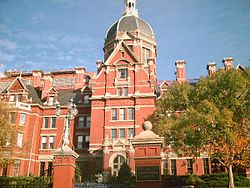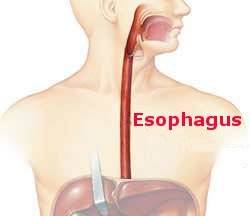This guest blog was written by Mark K. Ferguson, MD. Mark and I were colleagues at the University of Chicago where Adams and Phemister performed the first transthoracic esophagectomy with reconstruction. He has led the Thoracic Surgery division for many years and is an accomplished esophageal surgeon.
~
The average person swallows more than 1,000 times per day. Imagine how uncomfortable you would be if every swallow was impaired by the malignant growth of an esophageal cancer in your swallowing passage. Such cancers are not very common in the United States compared to cancers of the breast, colon, or prostate. Worldwide, however, esophageal cancer ranks 5th in the overall number of cancer deaths.
Esophageal cancer has been diagnosed for centuries, but successful treatment has only been available for a relatively short period of time. For most of modern medical history the only available treatment for esophageal cancer was surgery to remove it. This operation was challenging from the surgeon’s perspective because most of the esophagus, which extends from the back of the throat to the top of the stomach, is located in the chest.
The first successful operation to remove an esophageal cancer (esophagectomy) in the chest was accomplished in 1913. However, the patient didn’t undergo reconstruction of the esophagus with biologic tissues; instead, food traveled through an external tube that went from the neck to the stomach as an esophageal replacement. This allowed the patient to live for 12 years cancer free but without much quality of life.
Why didn’t the surgeon reconstruct the esophagus so that the patient could eat normally? There are a number of reasons for this. First, the esophagus is difficult to get to. In the chest it nestles against the windpipe, aorta, lungs, and heart. In addition, the rib cage, breastbone, and spine constitute additional hurdles to accessing the esophagus. Finally, in the early days of chest surgery physicians didn’t know how to effectively support a patient’s breathing, and merely opening the chest resulted in a high risk of death.
As a result, almost all esophagectomies in the first third of the 20th century were accompanied by an esophageal replacement outside of the chest (extrathoracic reconstruction) in order to limit the risk of the operation. This was accomplished either with biologic tissues or artificial tissues. The quality of life associated with these false swallowing passages was quite poor. Moreover, as of 1934, over 1 of every 3 patients undergoing such an operation died before being discharged from the hospital!
This began to change with the description of a successful esophagectomy for cancer and immediate reconstruction in the chest by Adams and Phemister in Chicago in 1938. The operation was not serendipitous but had been carefully planned, and established an important blueprint for such surgical procedures in the future.
William E. Adams was appointed an instructor in surgery at the University of Chicago in 1931 and began to systematically learn important lessons in the emerging field of thoracic surgery, often through travel to centers of excellence. He assisted in the first successful removal of an entire lung for cancer in 1933 during a stint at Washington University in St. Louis, and during 1935 was a surgical assistant to Ferdinand Sauerbruch in Berlin, where he learned a great deal about esophageal surgery. In his laboratory in Chicago, Adams subsequently rehearsed the technical details of opening the chest, removing the esophagus, and joining the remaining esophagus to the stomach. Once the operation was performed experimentally with reliable outcomes, he was ready to treat cancer patients.
Adams’ mentor and partner in the operation was Dallas B. Phemister, Chairman of the Department of Surgery at the University of Chicago, an internationally renowned general surgeon, and a pioneer of new techniques in his own right. He was especially known for his work in diseases of the bones including bone tumors, research on the causes of shock, and his leadership in many national and international professional societies.
The patient was a 53 year-old woman who underwent surgery on January 26, 1938, having been prepared with blood transfusion, intravenous fluids, and a high calorie liquid diet for 3 days prior to the operation. The patient’s left chest was opened between the ribs, and the cancer was immediately apparent. A small cut was made in the diaphragm (the breathing muscle that separates the chest from the abdomen), giving access to the upper part of the stomach. The stomach was divided below the tumor, and the esophagus was divided above the tumor, permitting removal of the tumor from the chest. The stomach and esophagus were sewn back together in the chest so that the patient could eat again once everything healed. She was discharged 25 days after the operation eating regular food, and lived for another 10 years in good condition.
The report of this operation, which had been meticulously researched, planned, rehearsed, and performed, had a tremendous impact on the subsequent management of esophageal cancer. Surgeons rapidly adopted the techniques of Adams and Phemister for resection, and particularly were influenced by their method of intrathoracic reconstruction. This avoided external reconstruction efforts, which were complex and unreliable, shortened the time for recovery and return to eating, and substantially improved quality of life for the patients. The techniques of this landmark operation, with minor revisions, are still routinely in use today.



